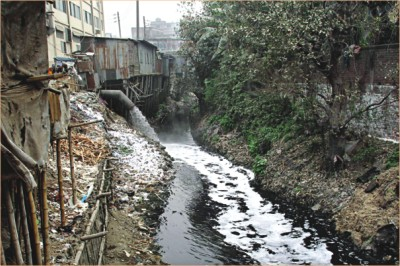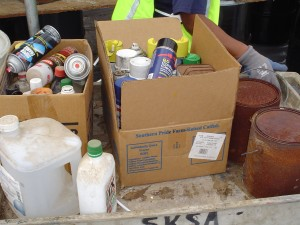
At present, waste management is conditioned by the deficiencies of current legislation. New draft Laws on Waste must be developed, but a new Law on Chemical Substances would also need to be developed. Policy, procedures, laws and rules on the management of chemical substances and wastes are under development in most developing countries but the issues of financial resource and planning often stifle their implementation.. They will ensure transparency in the decision making process and provide opportunities for the public to take part in monitoring as well as in decision-making.
Only 4 percent of the waste produced at municipal levels and of hazardous industrial wastes undergo regulated disposal or recycling. Contaminated sites are only rarely remediated due the legal constraints and a lack of financial incentives. Neither the necessary regulatory institutions nor suitable infrastructure exists. Fragmented responsibilities, inadequate personnel and technical capacities at all state levels hamper efficient waste and contaminated site management and make it difficult to meet legal requirements and regulations
Uncontrolled disposal of solid and liquid wastes and the existence of contaminated sites are a serious problem in developing and emerging countries.

The main generators of industrial wastes are, and may be in the future too, the metal industry, the ports and shipyards, the wood processing, the paper processing industry and the food processing industry. However, hazardous wastes were also identified from commercial and personnel services (e.g. filling stations, photo shops, cosmetic institutions).
Irrespective of the sector-specific industrial waste, the following significant waste flows were identified which, due to their quantities or their particular danger potential, require a solution to be found:
- PCB Waste is listed by the Ministry and some municipalities and industries as a special problem
- In the wood-processing companies, the high quantities of wood cut-offs and sawdust need a solution
- In the coastal areas, oil-contaminated wastewater and sludge are the main industrial waste stream
- In some municipalities there are problems with inadequate management of the waste from slaughterhouses; solutions are needed
Environmental awareness especially in the small and medium-sized industries) is low. It therefore proved difficult to obtain sufficient and reliable information on types and quantities of waste generated. Due to the lack of reliable data the Consultant has defined different industrial waste types potentially originating in the most relevant sectors:
